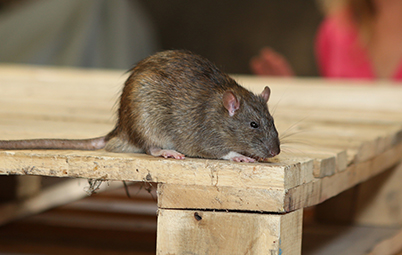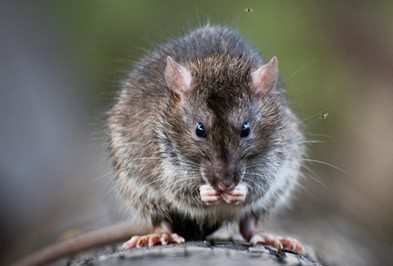Roof Rats
What Do Roof Rats Look Like?
Roof rats are dark brown or black in color with a contrasting lighter underbelly or black underbelly. Roof rats can grow to be 16 inches in length including their tail. They have large ears, a tail that is longer than their body and a pointed nose.
Why Are They Called Roof Rats?
Roof rats are named so because of their ability to climb very well; because they are such good climbers they are often found in the attics and upper levels of homes and other buildings.
How Can I Tell The Difference Roof Rats And Norway Rats?
Roof rats have a thinner, lighter build compared to the Norway rat, also they have a pointed nose, while the Norway rat has a more rounded nose. The roof rat’s tail is longer than their body, the Norway rat has a shorter tail than their body. The roof rat which is commonly referred to as the “black rat” because of their black fur which is darker in color than the brown Norway rat. Norway rats are not great climbers and are found in the basement and bottom levels of home, whereas the Roof rats are found invading higher levels of buildings. Also, roof rats prefer a warmer more humid climate than the Norway rat
Where Do Roof Rats Nest?
Outside roof rats tend to nest above the ground in trees, bushes, and in areas of dense vegetation. If they move inside of a home or other building they can be found in attics, above false ceilings, behind walls, and in the tops of cabinets.
Why Do I Have A Roof Rat Problem?
Roof rats are a common rodent problem in coastal and southern states, especially near seaports. Roof rats are often found nesting high up in trees, but also in burrows under plants. They are also likely to infest basements, areas under buildings and sewers as well as higher places in structures. If your property provides the essentials such a food, water and shelter, you could develop a rat problem.
What Kind Of Threat Do Roof Rats Pose?
Roof rats may cause damage by gnawing through walls, wiring, pipes and other important parts of your structure. They will eat your stored food and contaminate it with their feces. They have the ability to spread disease through their urine and their droppings as well as through their bites and the fleas and mites that may be hiding in their fur.
How Can I Tell If I Have A Rat Problem?
See our Norway rat pest identification page to find out how to tell if you have a rat problem.
How Do I Control Roof Rats?
Roof rats can be difficult to control because they will live and hide in very hard to access areas of your home. The most effective way to control roof rats in your home is to get help from a pest control professional. For help with roof rat control in your home contact Holder’s today, our EnviroGuard Program will provide you with safe, effective residential pest control services to get rid of roof rats and other common household pests from your home. If you have a problem with rats in your home contact Holder’s Pest Solutions today.
How Do You Prevent Roof Rats?
The best way to prevent roof rats is to fix the areas around your home that attract them to your property and allow them to gain access into it. Roof rat prevention tips include:
- Fixing or replacing loose or missing roof shingles; placing a tight fitting cap on any chimneys.
- Make sure that outdoor trash cans have tight fitting lids, and are placed a distance away from the exterior of your home.
- Keep trees and bushes trimmed back from your home’s exterior.
- Caulk gaps found around windows and doors.
- Make sure that vents have tight fitting covers on them.
- Food inside of your home should be kept in sealed containers or in the refrigerator.
Our professionals can help you identify problem areas and eliminate roof rats from your home.
Related Post From Our Blog
Keeping Rodents Out Of Your Houston Business
Rats and mice are known to cause countless problems for Houston businesses. Not only do they carry diseases and parasites that pose some pretty serious health risks to your employees and customers, but they are [...]
Houston Rodents 101
Houston is known for its advancements in space exploration, its extensive list of major league teams: the Houston Astros, Houston Texans, Houston Rockets, Houston Dynamo’s, and Houston Dash, and its extensive rodent infestation problem. While [...]
What’s That Scratching Sound? What To Do about Houston’s Home Intruders
Raccoons and squirrels and rats, oh my! Let’s just say we’ve been getting a lot of requests from our customers this time of year for small wildlife and rodent problems. It’s not surprising either, as [...]
Roof Rats Serving
Houston








